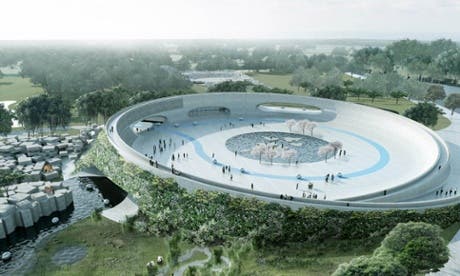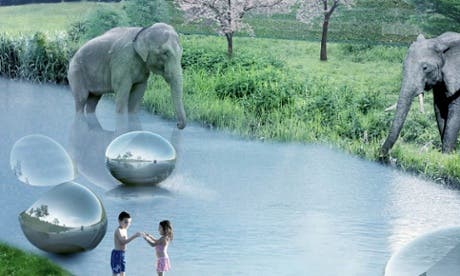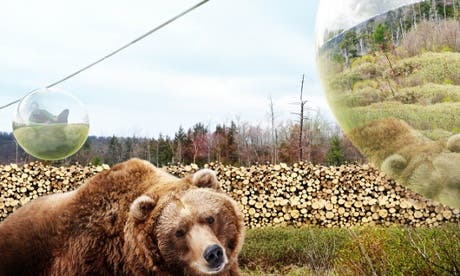
One can argue that zoos have no place in a civilized society; cheap entertainment with little educational value at the expense and suffering of countless animals. But let’s face it – they’re not going away any soon. So instead of abolishing them altogether how about radically transforming them? Bjarke Ingels is set on doing just that. The architect wants to revamp the Givskud “Zootopia”, a 1960’s built zoo in Denmark, by reversing the roles: animals are free to roam in the 300-acre facility, while humans are limited to a non-interfering role, peeking through enclosed settings, undetectable.

Practically, Zootopia will only have ‘cages’ for humans, not for animals like a typical zoo.
“Architects’ greatest and most important task is to … make sure that our cities offer a generous framework for different people – from different backgrounds, economy, gender, culture, education and age – so they can live together in harmony,” says the Bjarke Ingels Group, aka BIG. “Nowhere is this challenge more acrimonious than in a zoo.”
The proposed design also changes the general zoo navigation scheme that typically causes visitors to swarm around cages and exhibits. Instead, visitors will be able to access three observational areas, designed and crafted to emulate Asia, Europe and North America, all starting from a central hub. A buried bunker allows visitors to spot lions, peep at pandas through bamboo screens or spy on bears from a little house hidden in a stack of tree-trunks.

“Instead of copying the architecture from the various continents by doing vernacular architecture, we propose to integrate and hide the buildings as much as possible in the landscape,” say the architects – keen to avoid the usual Disneyish approach of Sumatran temples to see the tigers and Chinese pagodas to view the pandas, by doing away with buildings all together.
ZME readers, what do you think? Does this sound appealing to you or would you think of something different? Is the BIG-designed zoo, in fact, just a small, enclosed safari? As always, your comments are most welcomed.






